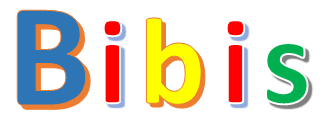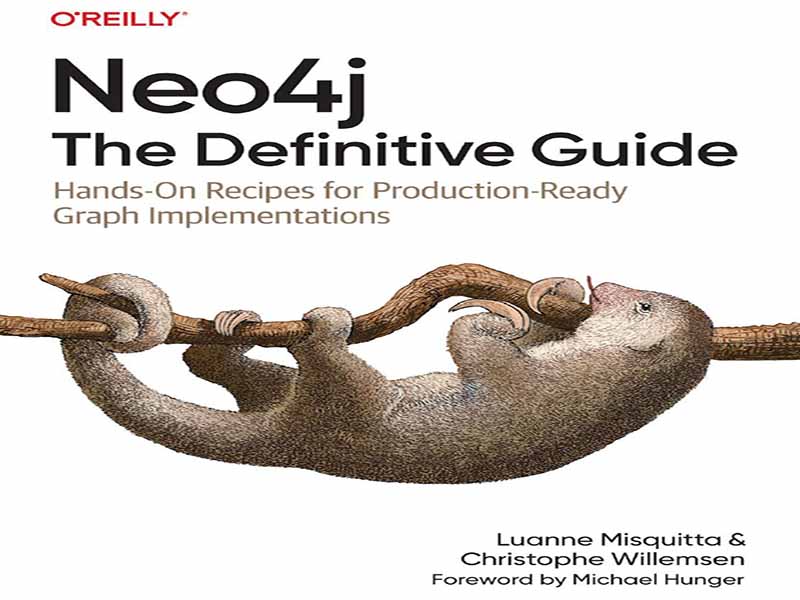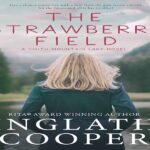- عنوان کتاب: Neo4j: The Definitive Guide -Hands-On Recipes for Production-Ready Graph Implementations
- نویسنده: Luanne Misquitta, Christophe Willemsen
- حوزه: گراف دانش
- سال انتشار: 2025
- تعداد صفحه: 662
- زبان اصلی: انگلیسی
- نوع فایل: pdf
- حجم فایل: 23.9 مگابایت
نمودارها همه جا هستند: اطلاعات به هم متصل هستند و به صورت جداگانه وجود ندارند. به خصوص اکنون، در عصر سیستمهای عامل هوشمند، داشتن یک موتور پایگاه داده فولاستک قابل اعتماد و کارآمد که از پایه برای مدیریت اطلاعات غنی و مرتبط ساخته شده باشد، برای پایهگذاری مهارتهای زبانی LLM شما بر اساس حقایق قابل اعتماد و زمینهای بسیار مهم است. نمودارهای دانش، دوقلوهای دیجیتالی کسب و کار شما هستند که به شما امکان میدهند سوالات جامعتری بپرسید و پاسخ دهید و بینشهای عمیقتری را که در دادههای شما پنهان شده است، پیدا کنید. GraphRAG به شما امکان میدهد از الگوهای بازیابی پیشرفته تولید افزوده (RAG) استفاده کنید تا خروجی LLM را قابل توضیح و زمینهای کنید. سفر من با نمودارها از دهه 1990 آغاز شد، زمانی که به طور تصادفی الگوریتم مسیریابی Dijkstra را هنگام ساخت ابزارهای سمت کلاینت برای یک ماجراجویی متنی آنلاین چندکاربره، دوباره اختراع کردم. بعداً، در سال 2008، در یک کنفرانس geek-cruise در دریای بالتیک با امیل ایفرم، یکی از بنیانگذاران Neo4j، آشنا شدم. من برای اولین بار کنجکاو شدم که درباره Neo4j بشنوم، چون در برنامههای خردهفروشی کار میکردم. میخواستم درباره کاربردهای مدلهای گراف و کوئریها در سلسله مراتب پیچیده دادهها بیشتر بدانم. من شروع به ساخت یکپارچهسازیهای متنباز برای پایگاه داده Neo4j (که در آن زمان فقط یک کتابخانه کوچک جاوا بود، از این رو نام “4j” را به خود گرفت) کردم و در سال ۲۰۱۰ به عنوان کارمند شماره ۱۰ به این استارتاپ کوچک سوئدی پیوستم. من روی تمام بخشهای این پلتفرم کار کردم و در همه چیز از هسته گرفته تا Cypher (بهترین زبان کوئری جهان) و کتابخانههای یکپارچهسازی برای وارد کردن دادهها و توسعه برنامهها (مانند Spring Data Neo4j و GraphQL) مشارکت داشتم. پانزده سال بعد، Neo4j یکی از “یونیکورنهای” سوئدی است که به هزاران مشتری بزرگ در سراسر جهان خدمترسانی میکند و یک پلتفرم داده گراف ارائه میدهد که به خوبی میتواند بخش مهمی از انقلاب GenAI باشد. اتفاقاً، تمرکز نقش فعلی من به عنوان معاون نوآوری محصول و تجربه توسعهدهنده نیز همین است. اگر به دنبال بررسی عمیق Neo4j توسط دو نفر از بهترین متخصصان این فناوری هستید، لازم نیست بیشتر جستجو کنید. نویسندگان، دو دوست شگفتانگیز من، لوآن میسکیتا و کریستوف ویلمسن، مدت زیادی (تقریباً به اندازه من) در فضای گراف Neo4j بودهاند، روی پروژههای متنباز و همچنین با طیف وسیعی از پروژههای مشتریان کار کردهاند. آنها سالهاست که نینجاهای رسمی Neo4j هستند و به هزاران سوال پاسخ میدهند، وبلاگ مینویسند، سخنرانی میکنند و آموزش میدهند. ما در سفر Neo4j از هر دو طرف پرده با هم شریک بودهایم: من در ساخت پلتفرم پایگاه داده مشارکت داشتم و لوآن و کریس به عنوان مشتری، کاربر و مشارکتکننده. در طول این سالها، من به عنوان رهبر روابط توسعهدهندگان و آزمایشگاههای Neo4j و بعداً نوآوری و تجربه توسعهدهندگان در مدیریت محصول، و همچنین به عنوان یک دوست و مربی، با آنها زیاد کار کردهام. من همیشه از کنجکاوی، هوش و توانایی آنها در حل مشکلات دشوار و تجزیه آنها به بخشهای کوچکتر و اجرای آنها در زمینههای تولید چالشبرانگیز لذت بردهام. هر دو معتاد به گراف هستند و ثابت میکنند که گرافها همه جا هستند: در تعاملات انسانی (خوب و بد)، تحقیقات علمی، امنیت و وابستگیها در زیرساختهای فناوری اطلاعات، زنجیرههای تأمین در اقتصاد جهانی، علوم انسانی دیجیتال و مخازن دانش. من در سال ۲۰۱۰ با لوآن آشنا شدم، زمانی که او در مدیریت مهارتهای گراف کار میکرد و با یک برنامه توصیه دستور غذا به نام Flavorwocky در چالش Heroku Neo4j ما برنده شد. از آن زمان، لوآن به بخشی جداییناپذیر از جامعه کاربران Neo4j تبدیل شده است، مقالات مینویسد، سخنرانی میکند و کلاسهای آموزشی برگزار میکند. کریس کار خود را روی پروژههای گراف متنباز آغاز کرد و در حین ساخت نرمافزار برای نیروی دریایی بلژیک بود. وقتی ما ملاقات کردیم، تحت تأثیر طبیعت کنجکاو و بازخورد همیشه عمیق و انتقادی او قرار گرفتم. اولین پروژه متنباز او Neoxygen Graphgen بود که با استفاده از قدرت توصیفات الگوی گراف متنی، نه برای پرسوجو، بلکه برای مشخص کردن دادهها، مدلهای گراف نمونه تولید میکرد. بعدها، او سالها درایور neo4j-PHP را ایجاد و نگهداری کرد و روی ادغامهای متعدد Neo4j با فناوریهای داده مختلف، از جمله Camel، Kafka، Elasticsearch و دریاچههای داده کار کرد. وقتی کریس به عنوان مدیر ارشد فناوری و لوآن به عنوان معاون مهندسی به شرکت مشاوره Neo4j به نام GraphAware پیوستند، بالاخره توانستند تمام وقت روی فناوری مورد علاقه خود کار کنند. آنها نه تنها هر روز با مشتریان و پروژههای سختگیر کار میکنند، بلکه Hume را نیز طراحی، ساخته و راهاندازی کردهاند، یک پلتفرم جامع برای وارد کردن، کاوش و بررسی گراف با ویژگیهای جدید و چشمگیر مانند تحلیل گراف پیچیده، الگوهای مجازی، نقشهبرداری مدل برای وارد کردن دادههای عظیم و ادغامهای هوشمند هوش مصنوعی. این کتاب نکات و ترفندهای زیادی را که آنها در طول سالها به سختی آموختهاند، به اشتراک میگذارد. این کتاب شما را در سفر گراف خود، با دنبال کردن تیم شرکت موسیقی خیالی ElectricHarmony در طراحی، توسعه، تنظیم و تولید موتور توصیه مبتنی بر گراف خود، راهنمایی میکند…
Graphs are everywhere you look: information is connected and doesn’t exist in isolation. Especially now, in the age of smart agentic systems, having a reliable and performant full-stack database engine that is built from the ground up to deal with richly connected information is critical to grounding your LLM’s language skills in trusted, contextual facts. Knowledge graphs are digital twins of your business that allow you to ask and answer more comprehensive questions and find the deeper insights hidden in your data. GraphRAG lets you use advanced retrieval augmented generation (RAG) patterns to make LLM output explainable and contextually grounded. My own journey with graphs started in the 1990s, when I accidentally reinvented the Dijkstra pathfinding algorithm while building client-side tooling for a multiuser dungeon online text adventure. Later, in 2008, I met Emil Eifrem, one of the founders of Neo4j, at a geek-cruise conference on the Baltic Sea. I was intrigued to hear about Neo4j for the first time, as I was working in retail applications. I wanted to know more about the applications of graph models and queries in the complex hierarchies of data. I started building open source integrations for the Neo4j database (which was back then only a small Java library, hence the “4j” name) and joined the small Swedish startup in 2010 as employee number 10. I worked on all parts of the platform, contributing to everything from the kernel to Cypher (the world’s best query language) to integration libraries for data import and application development (such as Spring Data Neo4j and GraphQL). Fifteen years later, Neo4j is one of the Swedish “unicorns,” serving thousands of large customers worldwide and offering a graph data platform that is well positioned to be a crucial part of the GenAI revolution. Coincidentally, that’s the focus of my current role as VP of Product Innovation and Developer Experience. If you’re looking for a deep dive into Neo4j by two of the best experts on the technology, you don’t have to look any further. The authors, my two amazing friends Luanne Misquitta and Christophe Willemsen, have been in the Neo4j graph space for a long time (almost as long as I have), working on open source projects as well as with a wide range of customer projects. They have been official Neo4j Ninjas for many years, answering thousands of questions, blogging, speaking, and training. We’ve shared in the Neo4j journey from both sides of the curtain: me contributing to building the database platform, and Luanne and Chris as customers, users, and contributors. Over the years I’ve worked with them a lot, in my capacity leading Developer Relations and Neo4j Labs and later Innovation and Developer Experience in Product Management, but also as a friend and mentor. I’ve always enjoyed their curiosity, smarts, and ability to take tough problems and break them down and execute on solving them in challenging production contexts. Both are graph addicts who prove that graphs are everywhere: in human interactions (good and bad), scientific research, security and dependencies in IT infrastructure, supply chains in the global economy, digital humanities, and repositories of knowledge. I encountered Luanne in 2010, when she was working in graph skills management and won our Heroku Neo4j challenge with a recipe recommendation application called Flavorwocky. Ever since then, Luanne has become an integral part of the Neo4j user community, writing articles, giving talks, and running training classes. Chris started out working on open source graph projects while building software for the Belgian Navy. When we met, I was impressed by his inquisitive nature and always deep and critical feedback. His first open source project was Neoxygen Graphgen, which generated example graph models using the power of textual graph-pattern descriptions, not for querying, but for specifying data. Later, he created and maintained the neo4j-PHP driver for many years and worked on many integrations of Neo4j with different data technologies, including Camel, Kafka, Elasticsearch, and data lakes. When Chris joined the Neo4j consultancy GraphAware as CTO and Luanne as VP of engineering, they could finally work on their passion technology full time. Not only do they work with demanding customers and projects every day, but they’ve also designed, built, and operated Hume, a comprehensive graph importation, exploration, and investigation platform with new and impressive features like complex graph analysis, virtual patterns, model mapping for massive data imports, and smart AI integrations. This book shares a lot of the tips and tricks that they’ve learned the hard way over the years. This book will get you started on your graph journey, following the team at the fictional music company ElectricHarmony as they design, develop, tune, and productionize their graph-based recommendation engine. Besides explaining the practical applications of graph modeling, querying, and importing real-world data, they also show common stumbling blocks and how to address them properly. As we follow the team through their development cycles, we learn more about the power and possibilities of graphs and about the decisions that have to be made at each stage of development. The book covers the recently released LTS version of Neo4j 5 as a robust foundation for your production deployment while also hinting at upcoming features and capabilities of the current development version. It also equips you for what’s coming: larger sharded graphs, serverless graph computation, tight integrations with large data platforms, and a graph-based AI platform.
این کتاب را میتوانید از لینک زیر بصورت رایگان دانلود کنید:
Download: Neo4j: The Definitive Guide



































نظرات کاربران